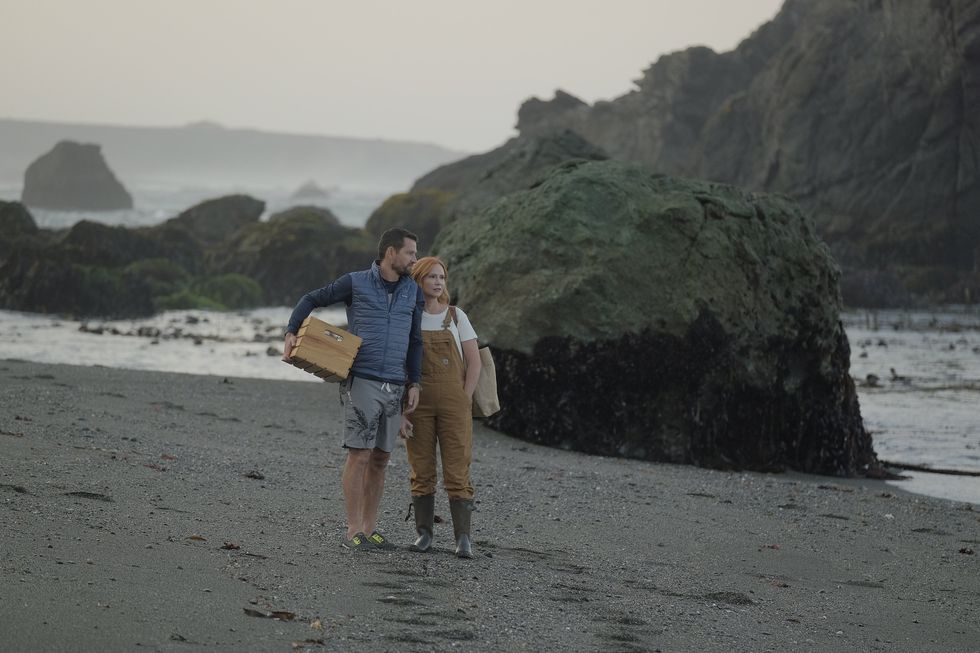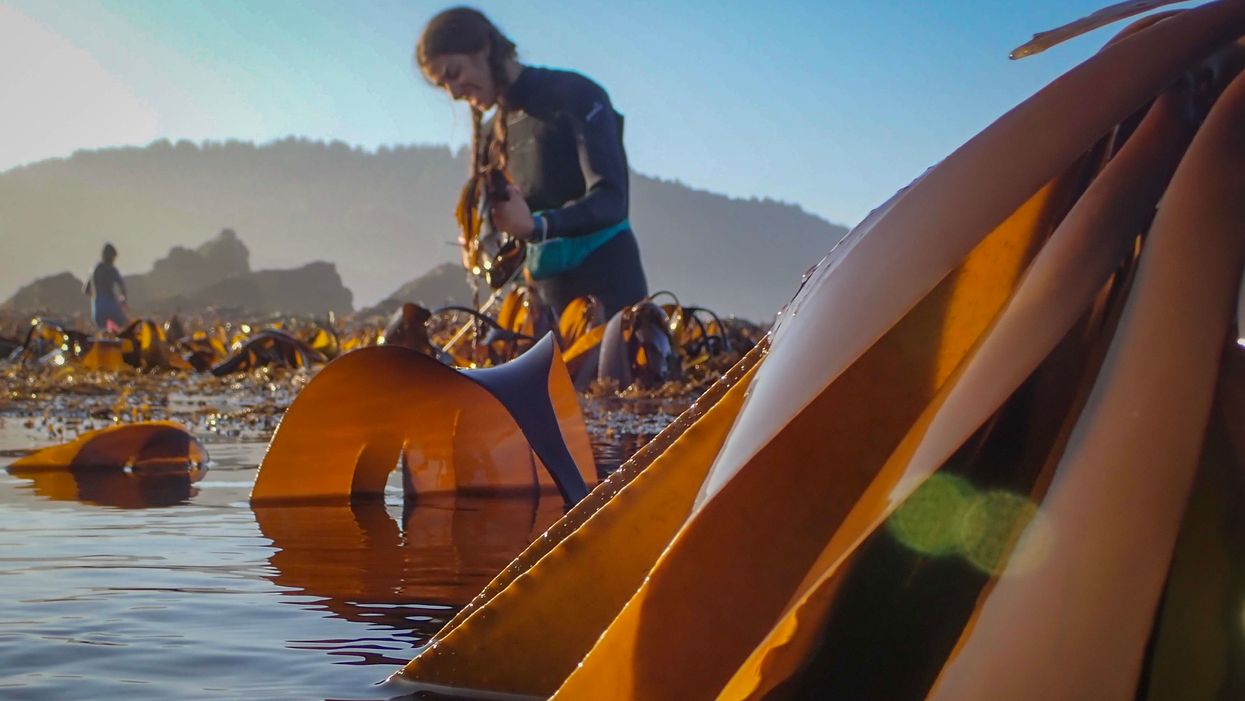These days, healthy eaters are obsessed with super foods—cacao, maca, spirulina, matcha, moringa...the list goes on. And while nori gets its due in sushi restaurants and some other fine dining establishments, seaweed isn't exactly flying off the shelves at your average supermarket.
But this superfood is not only rich in the same omega-3 fatty acids that are found in salmon, it also grows wild and in abundance on the California coast, luring nature-loving entrepreneurs and chefs who seek it out as a local and sustainable ingredient for everything from trail snacks to cocktails. Check out a few NorCal makers who are making waves with seaweed.
Salt Point Seaweed's Sustainably Harvested Snacks & Seasonings
Should you find yourself walking along the wind-whipped Mendocino coast at low tide, you might spot a trio of wetsuited water nymphs following the rhythms and cycles of the ocean to carefully collect kombu, wakame, and nori (with a Fish and Wildlife Permit, of course), later to be dried and packaged as flakes or snacks and sent off to Bay Area eateries and artisanal grocers.
Inspired by California's rich and diverse coastal ecosystems and a passion for keeping people and the planet happy and healthy, Tessa Emmer, Catherine O'Hare, and Avery Resor founded Salt Point Seaweed in 2017.
"All three of us have backgrounds in sustainable agriculture," explains O'Hare—Resor's background is in ecology, O'Hare's in farms, and Emmer's in supply chains agriculture; all are interested in the intersection of food, health, and global systems.
The women had seen open-ocean seaweed farming done in other places, and started asking themselves if they could do it here. They've started a small pilot farming project with Hog Island Oyster Farm to see what the potential is, but right now, what you can buy from them is wild, naturally grown.
The women are serious about harvesting seaweed sustainably. Rather than removing the plants, they cut off just what they need so that, when they return again, the quickly growing seaweed looks just as it did before. They also keep close tabs on the health and quality of the water where they source, making an argument for shopping local when it comes to seaweed—it's tough to trace the water quality in, say, China, Japan, or Korea.
After the seaweed is collected, it is dried in the sun or by solar dehydration, and then ground into flakes or made into bundles at the commercial kitchen space in The Berkeley Kitchens. Drying space is in West Oakland's O2 Artisans Aggregate, where they work alongside custom-furniture studios, edible insect snack shop, urban sawmill, and others, all focused on promoting environmentally progressive projects.
Most Americans have little experience cooking with seaweed, so Salt Point Seaweed makes education a part of their offering. Recipes (flourless nori sesame brownies, anyone?) are included with purchases, and some packages in their online shop even include the cookbook Ocean Greens.
"Kelps inspired the man who came up with MSG," says O'Hare, pointing to seaweed's rich umami flavors. She suggests adding it to beans, seasoning popcorn with wild nori flakes instead of salt, and even sprinkling their Surf Snack (nori and wakame baked with various seeds and maple syrup) on your yogurt.
// Salt Point Seaweed can be found at Bay Area eateries and groceries including Bi-Rite (San Francisco), Third Culture Bakery (Berkeley), Oaktown Spice Shop (Oakland), and Palace Market (Point Reyes Station), as well as online. For more locations and to purchase, go to saltpointseaweed.com.
Sebastopol's Seaweed-Infused Gray Whale Gin

Marsh and Jan Mokhtari.
(Courtesy Gray Whale Gin)
Gin might not be the first thing that comes to mind when one thinks about uses for seaweed. But then, seafarers with a taste for a martini might beg to differ. Gray Whale Gin is here to help you make the connection.
The story of this locally made seaweed-infused gin began on a camping trip in Big Sur. It was in 2014, and Marsh and Jan Mokhtari were at McWay Falls, watching a gray whale and calf make their way along the coast on their annual 12,000-mile migration between Baja California and the Arctic. It was one of those iconic Northern California moments; "We wanted to encapsulate the flavor of that crazy journey," Marsh remembers.
To capture the essence of that moment, the couple sourced botanicals from along that migration route: juniper from Big Sur; limes from Baja; Douglas fir from Sonoma; peppermint from Santa Cruz; and almonds from the Central Valley.
Sourcing the right seaweed was a complex task. "I went at it like a chef would go at creating a new dish," says Marsh, a former host of the Food Network Extreme Chef. "We tried nori, which was way too delicate. We tried sea palm—it was hard to get and less sustainable, with too much brininess and salinity. Kombu is the most abundant, and it has the best flavor profile."
And so kombu from Mendocino County, hand-harvested by the Mokhtaris and Rising Tide, found its way into Gray Whale Gin, lending an umami flavor and mouthfeel that helps round out the brighter citrusy notes, making the spirit easy to drink just on the rocks. Since launching, they have produced just seven batches of gin, at about 6,000 bottles per batch.
"We had never made spirits before, but we spent three years learning. It took 152 recipes," says Marsh, of the road to finally creating Gray Whale Gin, which the couple produces in their own Golden State Distillery in Sebastopol.
The gin came on the market in 2018, and it's already won awards, including the San Francisco World Spirits Competition 2018 and 2019.
Attention isn't just paid to what's inside the bottle. The bottling itself hearkens back to that first moment of inspiration, with blue glass the shade of the couple's VW camper van. The bottles are decorated with organic paint and the corks are biodegradable; a portion of sales benefit Oceana, and the distillery also donates 1 percent of all sales to One Percent for the Planet.
Unique Uses of Seaweed Around California
Salts
At the luxurious, Mediterranean-style Terranea Resort in Rancho Palos Verdes, a cliff-side suburb of Los Angeles, Executive Chef Bernard Ibarra kayaks out to harvest kelp, which is then dried at the hotel's own Sea Salt Conservatory to make flavorful sea salts for guests. The kelp shows up on the menus as well as in dried bundles for guests to take home "for bath or broth." // Terranea Resort, 100 Terranea Way (Rancho Palos Verdes), terranea.com
Spa
Seaweed is an OG ingredient at posh spas, which have used the moisturizing and mineral-dense stuff in skincare for eons. At Nob Hill Spa in San Francisco, the Seaweed Leaf Body Ritual begins with a seaweed scrub followed by a vitamin-rich wrap that helps tighten skin to anti-aging effect. // Nob Hill Spa at The Huntington Hotel, 1075 California St. (Nob Hill), nobhillspa.com
Drinks
Nori gin made in house along with liquid kelp, sake, and pickled sea beans make for the savory Sea Gibson, a one-of-a-kind cocktail at Gibson, in the Tenderloin's Hotel Bijou. // 111 Mason St. (Tenderloin), gibsonsf.com
Dinner
Chef Matthew Kammerer of the dreamy, 25-seat Harbor House Inn restaurant gathers his own kelp along the Mendocino Coast. It appears on the seasonally changing menu in such dishes as grilled maitake and kelp-cured vermilion rockfish. Guests get baked seaweed and seed energy bars. // 5600 CA-1 (Elk), theharborhouseinn.com





















